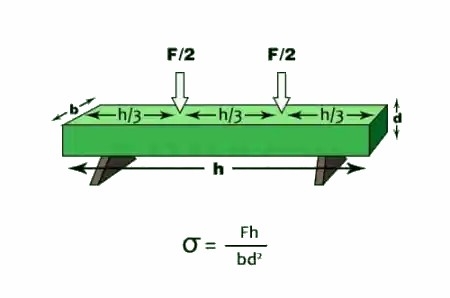Modulus of Rupture of Conrete
By BYJU'S Exam Prep
Updated on: September 25th, 2023

The modulus of rupture term is associated with a structural member when it comes to the member’s strength. In the civil engineering design of structures, any structure is designed based on a few parameters, including its strength parameters. The modulus of rupture is similar to the flexural strength of the material.
Modulus of Rupture PDF [GATE Notes]
The modulus of rupture of a material is one of the important parameters of designing. Let us discuss all the related concepts of the Modulus of Rupture. The modulus of rupture is the strength of the material when it is subjected to the bending action. These bending actions can be in terms of tensile or compressive loads. Sometimes modulus of rupture of the concrete is known as the transverse resistance of the material. ain this article modulus of rupture will be explained in a detailed way.
Table of content
Modulus of Rupture
The modulus of rupture is defined as the rupture strength of the material. The maximum bending stress is applied to the material before it starts yielding. Sometimes, it is referred to as the tensile strength of the material.
In case of bending caused by the transverse load on the structural member, It will cause compression on either side and tension on the other side. The modulus of rupture is the member’s strength against the tensile stress acting on the member.
Modulus of Rupture of Concrete
The modulus of rupture of concrete is one of the important parameters of the design. It is the strength of the concrete material against the transverse load on the concrete material. The modulus of rupture of concrete is a measure of its tensile strength in the tension zone of the concrete material.
The modulus of rupture of concrete gives the tensile strength of the concrete material. It is determined by the loading of the third point test. It is the maximum strength of the concrete material and can be determined by the flexibility of the concrete.
Download Formulas for GATE Civil Engineering – Fluid Mechanics
Modulus of Rupture Formula
The formula for determining the modulus of rupture varies depending on the various parameters of the structural member. These parameters consist of the cross sectional dimensions, material properties, etc. Here formula for the four point load on the beam is given below.

Relation Between Modulus of Rupture and Characteristics Strength of Concrete
The modulus of rupture is the flexural strength of the concrete. It is generally represented as the tensile strength of the concrete. Although the tensile strength of the concrete is negligible, it can be calculated in the laboratory with the help of the flexural test on the specimen. The modulus of rupture of concrete can be related to the characteristics and strength of the concrete, as mentioned below.
Direct tensile strength: fct = 0.35 (fc)0.5
Split tensile strength: fcts = 0.50 (fc)0.5
Flexural tensile strength: fct = 0.64 (fc)0.5
Where, fc = characteristics strength of the concrete in Mpa.
Download Formulas for GATE Civil Engineering – Environmental Engineering
Modulus of Rupture Test
As we discussed, the modulus of rupture is an important design parameter. So it is important to determine the modulus of rupture of a material. For determining the modulus of rupture, three point load test or four point load test can be performed on a structural member. A specimen size of 150 mm * 150 mm * 700 mm is generally used to determine the modulus of rupture.

Difference Between Modulus of Rupture and Flexural Strength
Modulus of rupture and flexural strength are very similar; sometimes, they can be used as synonenmys. But some differences also exist between the modulus of rupture and the flexural strength. These differences are mentioned below.
- Modulus of rupture is the property of the material under direct tensile stresses, while flexural stress is the material’s behaviour under direct bending stress.
- Bending stresses develop in the structure on the tension side of the structural member, while direct tensile stresses develop throughout the cross section of the member.


